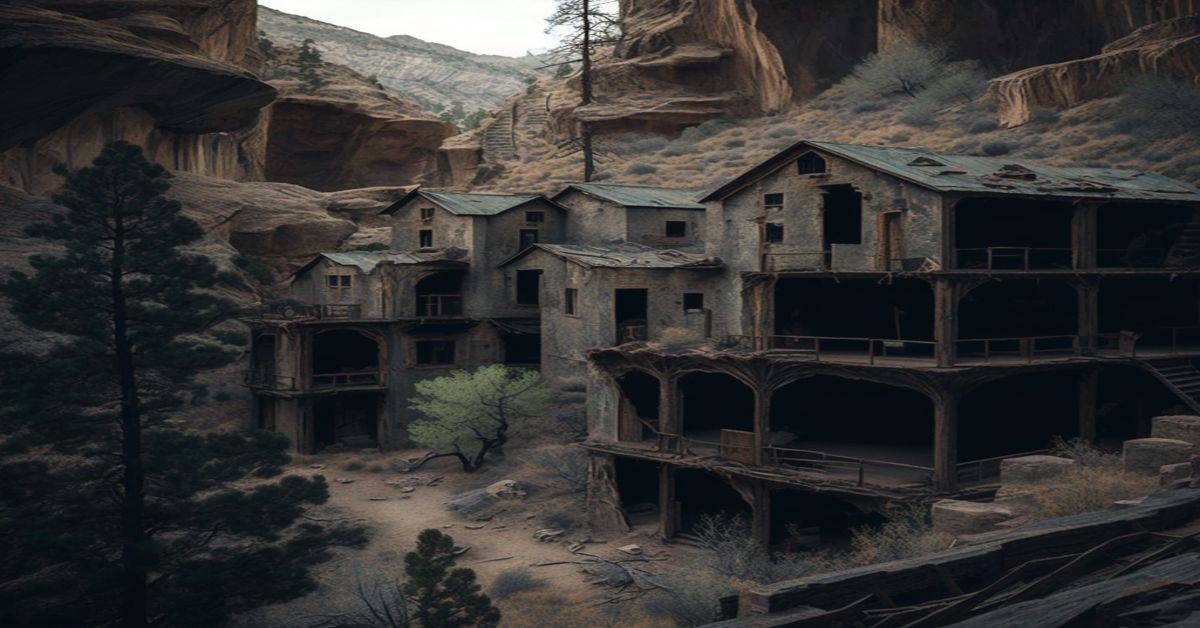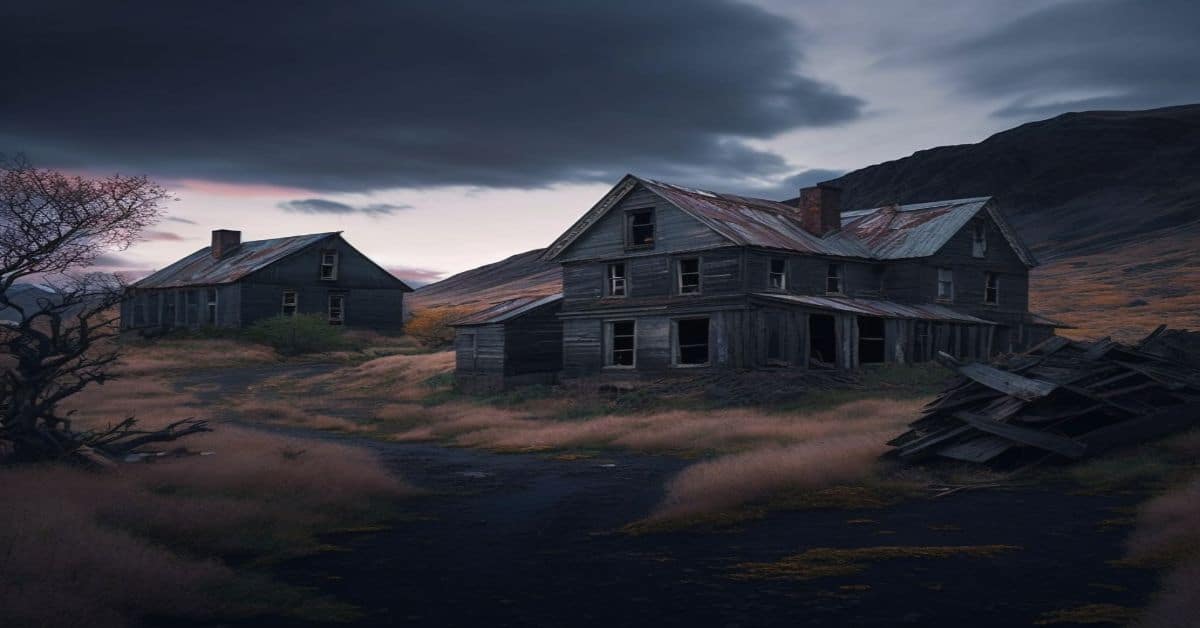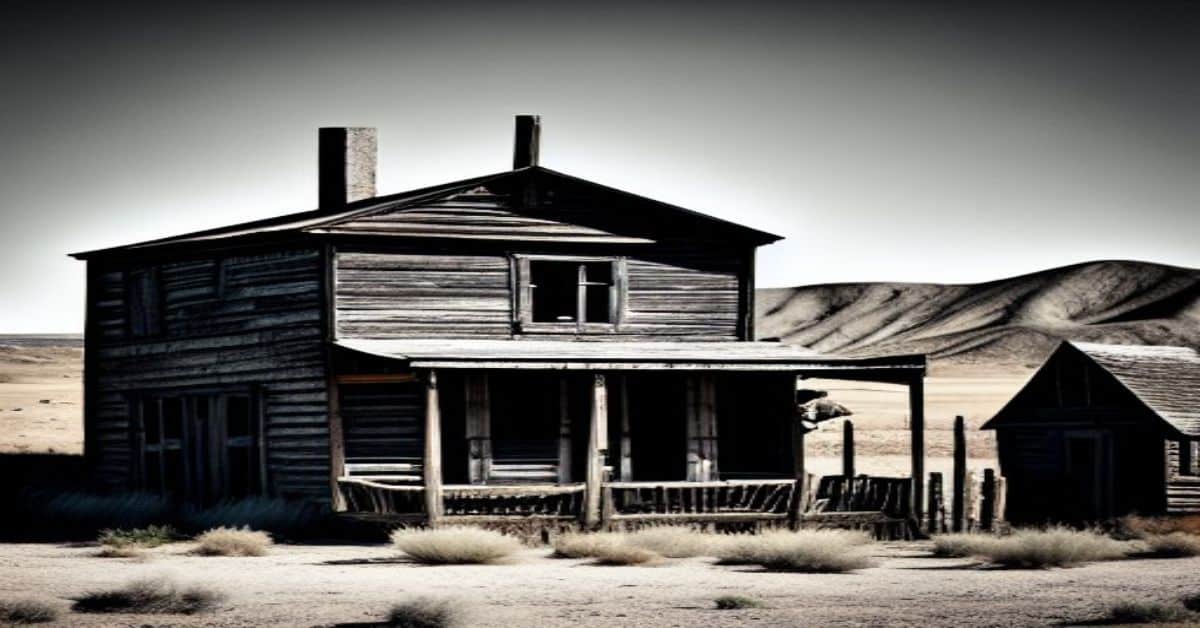Widstoe Junction, a once-thriving Utah ghost town, was established by Mormon settlers during the late 19th century.
At its peak in the early 1920s, the town boasted a population of over a thousand residents, complete with a school, hotels, stores, and a post office.
Over time, however, the town’s prosperity began to wane, with severe drought, erosion, climate fluctuations, and rodent infestations contributing to its eventual decline.
In 1935, the government purchased 30,000 acres of land from the residents, resettling 29 families to other areas throughout the state.
Today, only a handful of weathered buildings remain, including a barn, the original 1-room schoolhouse, and the Widtsoe Cemetery.
Despite its current state of abandonment, Widstoe Junction’s rich history and cultural significance continue to attract visitors from around the world, reminding us of the fragility of human settlements and the importance of preserving our past.
Key Takeaways
- Mormons settled Widstoe Junction in the late 19th century and was first named Adair, then Houston, then Winder before the post office changed the name to Widstoe in 1917.
- The town had two hotels, an LDS church, four stores, a post office, and a confectionery, among other infrastructure, but by 1934, only 40 families remained in Widstoe due to severe drought, erosion of the land, drastic climate fluctuations, and large numbers of rodents.
- The government purchased 30,000 acres from the residents and resettled 29 families to other tracts throughout the state, with the final families leaving with federal assistance in March 1938.
- Today, only a few weathered buildings remain, including a barn, the original 1-room schoolhouse, the Woodard house with assay office extension, another private residence, a few sheds, and root cellars, and the Widtsoe Cemetery is still in use.
History and Settlement
Despite being settled by Mormons in the late 19th century and reaching its peak population of 1100 in the 1920 census, Widstoe Junction’s infrastructure was limited to a school building, private home, and many cabins in different states of deterioration.
Water had to be brought into town in barrels, and fuel was sourced from the surrounding hills.
The town’s development was slow, and it took years for essential amenities such as running water to be piped in iron pipes from a nearby spring and a post office to be established.
By 1914, Widstoe had two hotels, an LDS church, four stores, a post office, a confectionery, and a population of 310.
The harsh living conditions and the lack of resources stymied the town’s growth.
Despite its remote location, there was talk of moving the county seat from Panguitch to Widstoe, and W. F. Holt, the financier-developer of Imperial Valley, California, was interested in investing capital in the area.
Holt spent nearly $300,000 in the area, but severe drought, erosion of the land, drastic climate fluctuations, and large numbers of rodents took their toll.
By 1934, only 40 families remained in Widstoe, and the government offered resettlement to the remaining residents in 1935.
Infrastructure and Daily Life
The infrastructure of this former settlement included a school building, private homes, many cabins in different states of deterioration, and a possible lumber mill stood on the site from the wood shaving remains.
Water had to be brought into town in barrels, and fuel was wood from the surrounding hills.
Running water, piped in iron pipes from a nearby spring, was brought to the town in 1915.
Coal oil lamps or candles lighted the homes.
By 1914, the town had two hotels, an LDS church, four stores, a post office, a confectionery, and a population of 310.
The residents of Widstoe Junction had to rely on bringing water in barrels and using wood as fuel for their daily needs.
They had to use coal oil lamps or candles to light their homes.
With the availability of running water in 1915, the residents had a more reliable source of water.
However, the fuel source remained the same.
The town had a few buildings that were in different states of deterioration, including a barn, the original 1-room schoolhouse, the Woodard house with assay office extension, another private residence, a few sheds, and root cellars.
Today, Widstoe Junction is a poignant reminder of a by-gone era and the ephemeralness of life.
Decline and Current State
Following the severe decline of Widstoe Junction, the town was eventually resettled with federal assistance in 1938.
Today, the site serves as an important reminder of a bygone era, and there have been efforts to preserve what remains of the town.
Despite its small size and remote location, Widstoe Junction has significant tourism potential.
The town’s history and unique character draw visitors interested in exploring the region’s past and experiencing the stark beauty of the surrounding desert landscape.
While the town’s remaining buildings are weathered and in various states of deterioration, they allow visitors to connect with the past and imagine what life was like for the area’s early settlers.
As such, Widstoe Junction offers a valuable glimpse into a fascinating piece of Utah’s history.
Frequently Asked Questions
Who were some of the notable residents of Widstoe Junction?
Notable residents of Widstoe Junction are not mentioned in available sources. However, the town’s historical significance lies in its settlement by Mormons in the late 19th century, its growth in the early 20th century, and its eventual decline due to drought and erosion.
What types of businesses were established in the town besides the ones mentioned in the article?
Additional businesses in Widstoe included a blacksmith, a barber shop, and a dance hall. These establishments had historic significance and made a small economic impact on the town.
Are there any legends or ghost stories associated with the town’s history?
The article does not mention any haunted tales or supernatural rumors associated with Widstoe Junction, a Utah ghost town.
What efforts have been made to preserve or restore the remaining buildings and structures in Widstoe Junction?
Numerous efforts towards preserving and restoring the remaining structures in Widstoe Junction have been made, including stabilizing the schoolhouse and Woodard house, and creating a walking tour for visitors. Private and state ownership pose challenges for restoration projects.
How has the land and surrounding environment changed since the town’s abandonment?
The land surrounding Widstoe Junction has experienced erosion and drastic climate fluctuations since its abandonment. However, there has been some regeneration of flora in the area over time.


